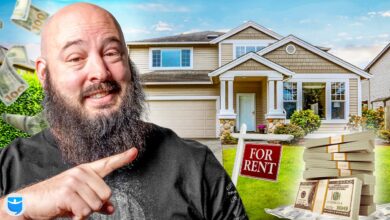
[ad_1]
Last week, Realtor.com published another version of its ‘‘magic number’’ forecast. The number in question is the mortgage rate number low enough to ‘‘unfreeze’’ the real estate market.
We know that the market has been in something of a gridlock for over a year now:
- Home prices are very high and keep rising.
- Mortgage rates are high and aren’t showing much of a downward trend.
- There aren’t enough homes to go around, especially those that are remotely affordable.
Something has to give.
The consensus is that this something is mortgage rates—they’ll have to come down substantially for the housing market to get back to anything resembling normality.
What’s the Magic Number?
So, Realtor.com asks, what is the mortgage rate threshold that needs to be crossed for buyers to start buying again? Well, the answer depends on who you ask and when.
Of the 5,000 U.S. consumers surveyed, 22% would consider a home purchase if rates went below 6%. And for 18% of respondents, a rate of below 7% would be good enough.
Long-suffering millennials and Gen Z buyers are even more resigned to high rates—47% of respondents in the millennial bracket and 37% in the Gen Z bracket would still take the plunge even if rates topped 8%. Basically, buyers in these categories will buy no matter what—if they just manage to save up enough and can find a home to buy.
Asking the Right Questions
However, there is an elephant in the room with this ‘‘magic number’’ forecasting: It’s not asking the right question. And because it’s not asking the right question, it’s not precise enough in its choice of respondents.
First-time buyers, daunted and discouraged as they may be by the new reality of high home prices and high rates, will not give up on their perception of homeownership as a dream worth striving toward. But first-time buyers also hold no power in the current real estate market dynamic. The people who do are existing homeowners who aren’t selling. It’s these people who are worth asking for the ‘‘magic number’’ that may give them enough confidence to move and finally release inventory.
As it turns out, there is a different survey that talks to the right people. John Burns Research and Consulting surveyed existing homeowners last year and found that ‘‘71% of prospective homebuyers who plan to purchase their next home with a mortgage say they are not willing to accept a mortgage rate above 5.5%.’’
Note that the question isn’t about what existing homeowners could afford (all respondents had household incomes of above $50,000) but about what they are willing to accept. And the majority of them, 62%, believe that ‘‘a historically normal mortgage rate is below 5.5%.’’
This perception is factually inaccurate. According to Freddie Mac records going back to 1971, the long-term average mortgage rate is just under 8%. So, first-time millennial buyers actually have more realistic expectations than existing homeowners.
That, of course, is because 80% of existing homeowners currently have mortgages with a below 5% rate, and a third are on rates below 3%, according to Zillow. It’s more than understandable that many of them have no desire to sell and lock themselves into the current rates (which were at a 7.9% 30-year average as of this writing).
Will the Market Unfreeze Itself Anytime Soon?
The reality is that we are a long way off from the ‘‘magic number’’ of 5.5% that would theoretically release all the inventory that sellers are holding on to. Of course, some people will sell anyway, for one pressing life reason or another.
Recent research by the Haas School of Business shows that while a 1% increase in mortgage rates reduces moving rates by 9%, once ‘‘the benefit of refinancing exceeds its cost, moving probabilities become unrelated to’’ mortgage rates.
All that said, the incentive to move has to be pretty high, e.g., a large salary increase. And even then, low mortgage rates often trump wage increases: People tend to stay put if their current fixed rate is low enough.
So, what could truly unfreeze the housing market? One solution could be more portable mortgage products, where a mortgage can be transferred to a new property with the existing rate. Another solution could involve making typical fixed mortgage terms shorter like they are in many other countries. Otherwise, we may see a deeper, longer-term freeze: a 25% decline in existing homeowners moving by 2033, according to the Haas study.
Make Easier and Smarter Financing Decisions
Deciding how to finance a property is one of the biggest pain points for real estate investors like you. The wrong decision may ruin your deal.
Download our What Mortgage is Best for Me worksheet to learn how different mortgage rates impact your deal and discover which loan products make the most sense for your unique position.

Note By BiggerPockets: These are opinions written by the author and do not necessarily represent the opinions of BiggerPockets.
Source link



